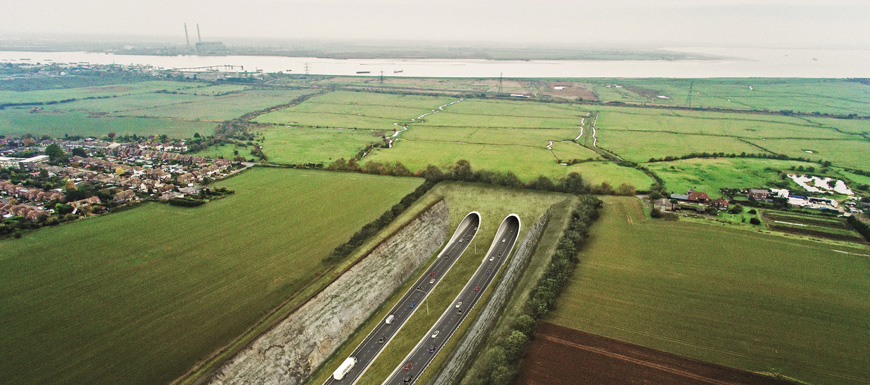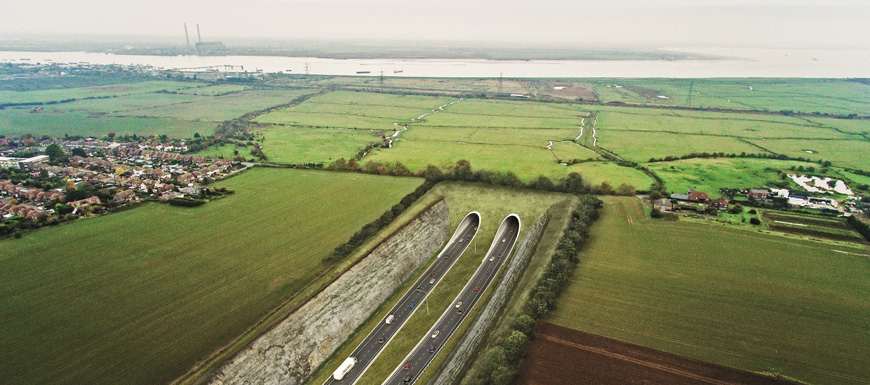Thurrock Unitary Authority give 17 Reasons
17 reasons against a crossing
Details of Thurrock Council’s response to the Highways England consultation into a proposed new Thames crossing were revealed this week.
Agenda papers for the council meeting on Wednesday, 23 March, were made public and included the proposed response – which is expected to be approved by all members.
The council’s opposition to the proposal for another crossing in the borough was unanimously agreed on 28 November 2012, unanimously reaffirmed on 25 November 2015, and again confirmed by all councillors at full council on 27 January 2016.
Cllr John Kent, Leader of Thurrock Council, said on Wednesday (16 January): “I would urge everyone to make sure they respond to Highways England’s consultation before its closing date of Thursday, 24 March.
“We have been waiting for our expert consultant’s final report, which is now available and online along with a summary.
“I think people should look at what we’re saying and put their response in their own words and in their own order. Some people believe the air quality issue should be top of the agenda, others the green belt and others still congestion and value for money.
“Then there’s the shambolic way the consultation was run and organised; changing the rules a third of the way through and failing to provide all the information necessary simply is not good enough.”
Cllr Kent added: “If Thurrock Council organised a consultation in this disorganised, confused, and muddled way we would be lampooned – and quite rightly too.
“Our response has 17 points detailing why the council believes neither Option A nor Option C – or Routes 1, 2, 3, or 4 – should go ahead.
“They make it perfectly clear this is not a knee-jerk NIMBY response, but that the proposals are wrong in 17 different and 17 evidence-based ways.”
And he added: “We are also demanding a seat ‘at the table’ if the government ignores our arguments and rides roughshod over the people of Thurrock. If that happens I want to be there fighting for local people’s future and the future of this borough as a whole.
“We live here and we want a say.”
The 17 reasons
Thurrock Council is unanimously opposed to any Lower Thames Crossing at the proposed locations for the following reasons:
- The traffic movement data on which the appraisal partly relies is historic – 2001 demand data. It is the foundation of the Highways England (HE) decision making yet there have been significant new developments in the sub-region over the last decade, and trip making patterns have changed as a result.
- Route 3 has a slightly higher benefit to cost ratio, but there is no clear headway between options. Benefit to Cost ratios at lower end do not include wider economic benefits but the upper end does.
- For the Highways England’s preferred route (Route 3) these are 2.3 (lower) and 3.4 (upper). For every £1 invested HE claim a return of £2.30 – but this return is made up substantially of time savings arising from traffic on the new route. Given there are significant questions over the accuracy of the data from 2001, there must be questions over the accuracy of the modelling and therefore the travel time savings, and hence over the accuracy of the benefits.
- Route corridors A and C fulfil substantially different strategic functions. Location C is likely to be less effective in alleviating congestion at Dartford Crossing than location A.
- If a new crossing is built at location C, when incidents occur on the Dartford Crossing, there is no evidence that the local road network can cope with traffic diverting from the Dartford Crossing to the Lower Thames Crossing. Highways England’s preferred option may cause worse community and environmental problems over the wide area, particularly on the key roads of the A13 and A2 when diverting traffic hits bottlenecks.
- Any gridlock will worsen pollution in the area in increased emissions from vehicles and the number of vehicles. The future modelled scenario has an increased traffic movement from 140,000 vehicles a day now with the existing crossing to nearly 240,000 a day in total by 2041.
- At the existing crossing traffic volumes in 2025 are predicted to be around 14% lower than a scenario without a new crossing. By 2041 they are predicated to be just 7% lower. This suggests that location C options have very limited benefits in terms of the main objective ‘ to relieve the congested Dartford Crossing and approach roads’. In consequence, there is unlikely to be a significant long term difference to general traffic conditions at the existing crossing.
- The detailed information available to Highways England is yet to be published. There is a lack of information to make an informed decision over any route and the strategic case tests have not been met. More information is specifically required on wider traffic flows and impacts on junctions.
- The need for a new crossing has not been demonstrated. Further work is required to explore alternative modes of travel. More freight could go by rail. It is not shown how the options could support sustainable travel and land use integration as set out in Government Guidance.
- The environmental harm caused by the scheme has not been fully assessed or quantified, including the impacts on health and local amenity and this may not be out-weighed by any economic or transport benefits – clearly further work is required on air quality and public health before the Government makes a decision. It must be given weight alongside economic and transport benefits.
- As Option 1 within Corridor A has been reintroduced, after the consultation has started, a full ‘ like for like’ assessment should be provided.
- The public interest ‘compelling case’ required for Compulsory Purchase Orders has not yet been met.
- The consultation has been flawed, with inadequate comparative information, inadequate capacity at venues, and inadequate hard copy consultation materials. The consultation should be at least extended but preferably halted to allow further work.
- The Council has written two letters to the Secretary of State for Transport to this effect, but has yet to receive a reply. It has also not received a response to its letter to the Chancellor of the Exchequer.
- What is needed is a full strategic road network and local access road review to maintain resilience over the next 10 years.
- The Council requests that joint work be instigated by Thurrock Council, the Department for Transport, and Highways England on the effect of pollution from vehicles on the health of residents.
- Should Government insist on progressing a LTC option after the consultation that Thurrock Council should have a seat around the table to help protect residents and businesses from the least – worst option.


